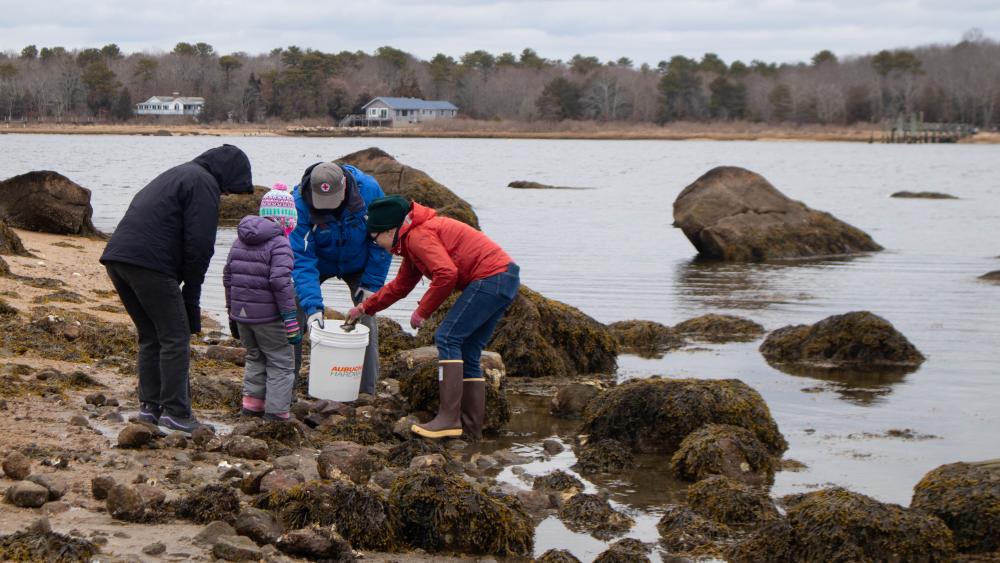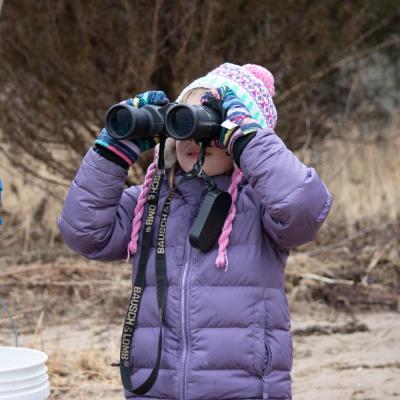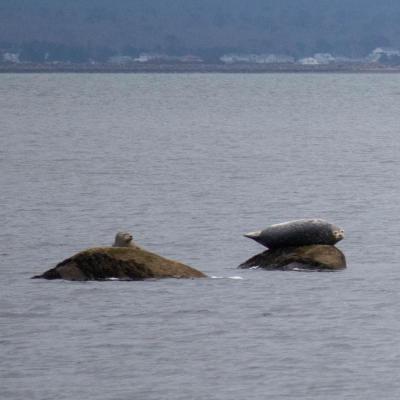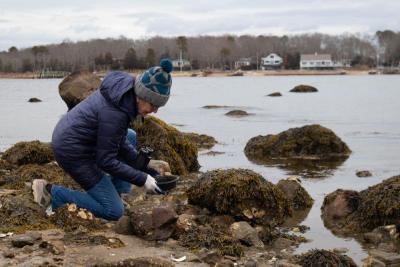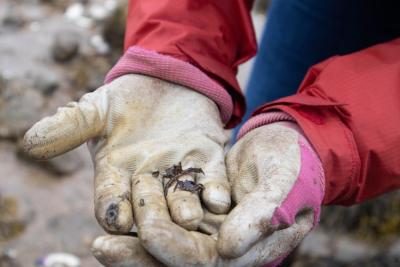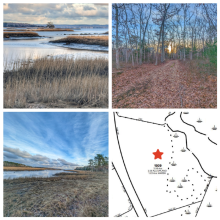Finding coastal critters at tidepool excursion
MARION — It was a brisk 40 degrees on Saturday, Feb. 24 but the cold weather was perfect for an excursion to explore the tidal ecosystem at Marion’s Brainard Marsh.
Even in the cold “you get to see what’s living here — stuff changes,” said Woods Hole Oceanographic Institute Marine Biologist and Sippican Lands Trust board member Carolyn Tepolt. “You see different animals at different times of year. You get a sense of, seasonally, what changes.”
Tepolt was joined by a small group carrying buckets and nets who walked down to the shoreline to find the critters living along the water.
Sightings included oysters, barnacles, crabs and even some seals lounging on rocks not too far from shore.
“It’s really fun to have this lovely access and property to be able to bring people out and get folks excited about what’s living in the ocean,” said Tepolt.
One tidepool explorer was Sandria Parsons, a former fourth-grade teacher in Plymouth who “always had a saltwater aquarium in [her] classroom all year long.”
Parsons explained that she and her students would go on a field trip to “a place like this” and gather little creatures to bring back to the 50-gallon tank she kept in her classroom.
“It was one of the greatest learning experiences for me and my students,” she said.
Parsons had planned to bring her five-year-old granddaughter to Saturday’s tidepool excursion so that she could be exposed to the “same kind of pleasures I had … at the shore” but she wasn’t available.
But while Parsons’ granddaughter couldn’t attend, one youngster did make it to the shore.
Five-year-old Molly Strout explored the tidepool with her grandfather, Frank Murphy.
Strout “had fun” asking Murphy and Tepolt to lift up increasingly larger rocks to see what kind of animals lived underneath. They found “crabs and lots of snails,” said Murphy.
As the only child on the tidepool excursion, Strout had a lot of one-on-one attention from Tepolt.
“I really enjoyed how [Tepolt] interacted with that young child — with Molly — because that’s where the interest begins,” said Parsons. “If you can just expose children to more than just the beach … they suddenly realize there are so many living things at the shorelines.”



